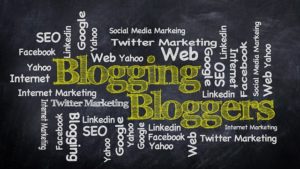Communicating science to the broad public is gaining more and more importance in the everyday life of researchers. In the age of fake-news and misinformation, making science accessible to everyone is becoming a shared responsibility not just of scientific organizations, but also of individual researchers and specialised science communicators.
Sharing science in an understandable way, particularly the research developed by one-self, is often a challenge. Researchers tend to put too many details, too much emphasis on the particulars of their research. We are not usually trained to simplify our writings; any training on writing is usually towards producing papers, not dissemination or communication pieces. And the struggle is especially daunting for non-English speakers.
Here, I give just a couple of tips on how to face the challenge and be more efficient in addressing the broad public using blog posts and/press releases. But first, we need to define some words.
What is science dissemination? And science communication?
Dissemination is spreading information, like disseminating seeds. According to the CDC “a dissemination plan is a plan for communicating research findings or products to those who will use the information in practice”.
This means, research dissemination is addressed not to the broader public, but to scientists, policymakers and other stakeholders that might be able to apply the findings of your work. All these people don’t need necessarily to work in your specific field of knowledge. Therefore, you might need to reach them in ways different from a paper in a scientific journal. And this way might be a press release.
Communication is getting a message across. According to a report released by UK government publishing services, research communication is “defined as the process of interpreting or translating complex research findings into a language, format, and context that non-experts can understand”. Meaning, communication is specifically addressed to reach the wider public. A post in a blog would be a good way to go.
What is press release?
A press release is an official and informative communication statement delivered to the general media that provides answers to the 5W+1H questions (what, where, when, why, who, how). It is a vital piece of science communication that potentially connects the content of a scientific paper/research/project with the general public. Many big universities and research organization have a Public relations (PR) office that deals with the writing of such news pieces, however many other – especially those with more limited budgets- do not.
Tip of the day: go and find if your organization has a PR officer. If so, learn how to connect with them. Are there emails or phone number?
It is impossible to share here all the key specifics that are vital to developing a good press release/blog post. And besides, I don’t know all the answers either. HOWEVER, there are a few things/tricks I could share. And also, some tools.
Tips for writing your blog posts/press releases

- Choose a catchy title that could potentially be used as a short social media post, less than 280 characters long. This means: the title might become your tweet!
- Remember to include meaningful keywords. This will help your text to be easier to find people interested in the topic.
- Show WHY your post/research is interesting in the very first paragraph. After the WHY/WHEN/WHERE, explain, HOW, WHAT and of course if applicable, the WHO. Think the first paragraph should be also potentially sharable in social networks such as Facebook, Instagram or LinkedIn. Give your best here!
- Take always into account your audience to adequate the vocabulary used. In case you want to reach the general public, try to avoid scientific jargon only meaningful for fellow scientists.
- Include subheaders, this will ease your SEO (search engine optimization) and will make the text easier to read.
- Keep the post short, just 4 paragraphs, less than 1.000 words. Make sure your paragraphs are concise, just 5 lines long.
- References: In the case of blog posts, include just a few references, do not overwhelm the reader with tones of bibliography. And the only reference for your press release would be your original scientific paper/s. Of course, adding hot links might help here.
- In your texts, when possible:
- include external and internal links, this will help your SEO
- display data as lists, makes texts easier to read
- use bold letters to enhance important bits and attract the eyes of readers
Tools that might help you with your science communication

Regarding tools* for science communication , I will share you three that I use almost daily. I hope they might help you with your writing as they do with mine.
Hemingway app
This is a free app that will help you simplify your writing. How? It will mark your lengthy sentences, the adverbs, the passive voice… But most importantly, it gives you back a “readability score”. This score goes from 0 to 16 (and beyond) and determines how many years of education a person might need to understand your text. A score of 9 indicates that anyone that has finished 9th grade will be able to understand your writing. A score of 14 will imply that probably only people that have gone to university will be able to understand. With a score of 16 or beyond your text will be suitable only for postgraduates. For communication purposes (that is if you want to reach global audiences), your text will need to be scored ideally 9 or below. But, I tend to be happy with a 12 on dissemination texts. And actually, this paragraph score is 6.
De-jargonizer
De-jargonizer is also a free tool developed by a research team from Israel that will help you identify all the scientific jargon that you are inadvertently using in your text. As a rule of thumb, a text would have less than 2% jargon in order to be understandable or readable. Think about it: If you read a text where you don’t understand more than 2 words out of 100, what do you do? I know what I do; I tend to stop reading. However, this tool is not perfect though and might highlight names of organizations or people as jargon as well. However, it will give you a good indication. What do we have to do when too much jargon is present? Use a simpler word. Or delete it, if not necessary.
Finally, I also use Grammarly quite often. This a freemium app, meaning that many features are for free, however, there is Premium version available with extras. I use the free version, and in general is enough to help me with the spelling, some grammar issues and, from time to time, searching for colorful synonyms.
Hope you find all this useful!
References
- R. Gleadow “Getting heard: impactful knowledge exchange” Global Plant Council blog.
- Public Understanding of Science Journal social media guidelines
*Heads up to Tzipora Rakedzon from,Technion, Israel, who shared some of these tools in the “Communication is the key: Assessing and teaching advanced science writing in English as a second language for STEM graduate students” workshop that was held in Seville on July 2019, as part of the SEB annual meeting. In particular, the De-jargonizer which she developed in her own linguistics research.
Front image credit: Werner Moser / Pixabay
Author: Isabel Mendoza, Communications Officer






